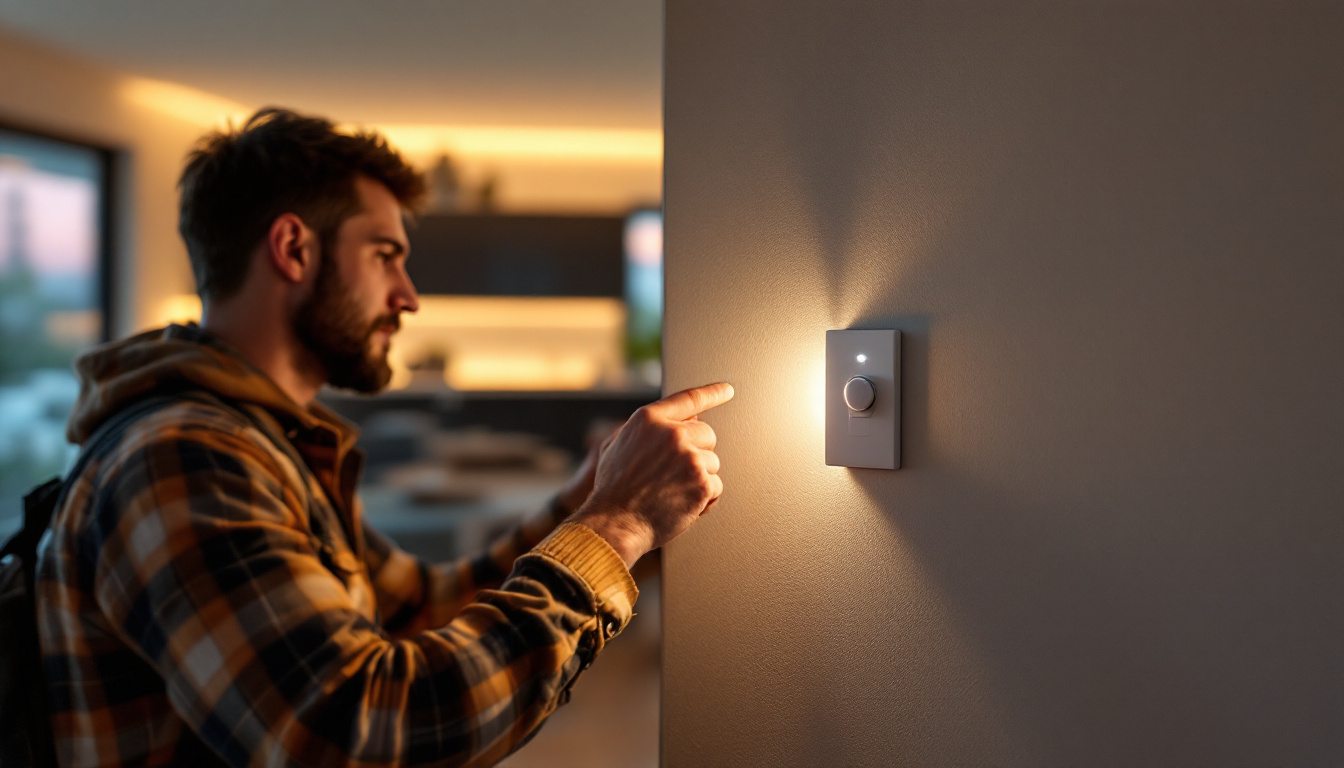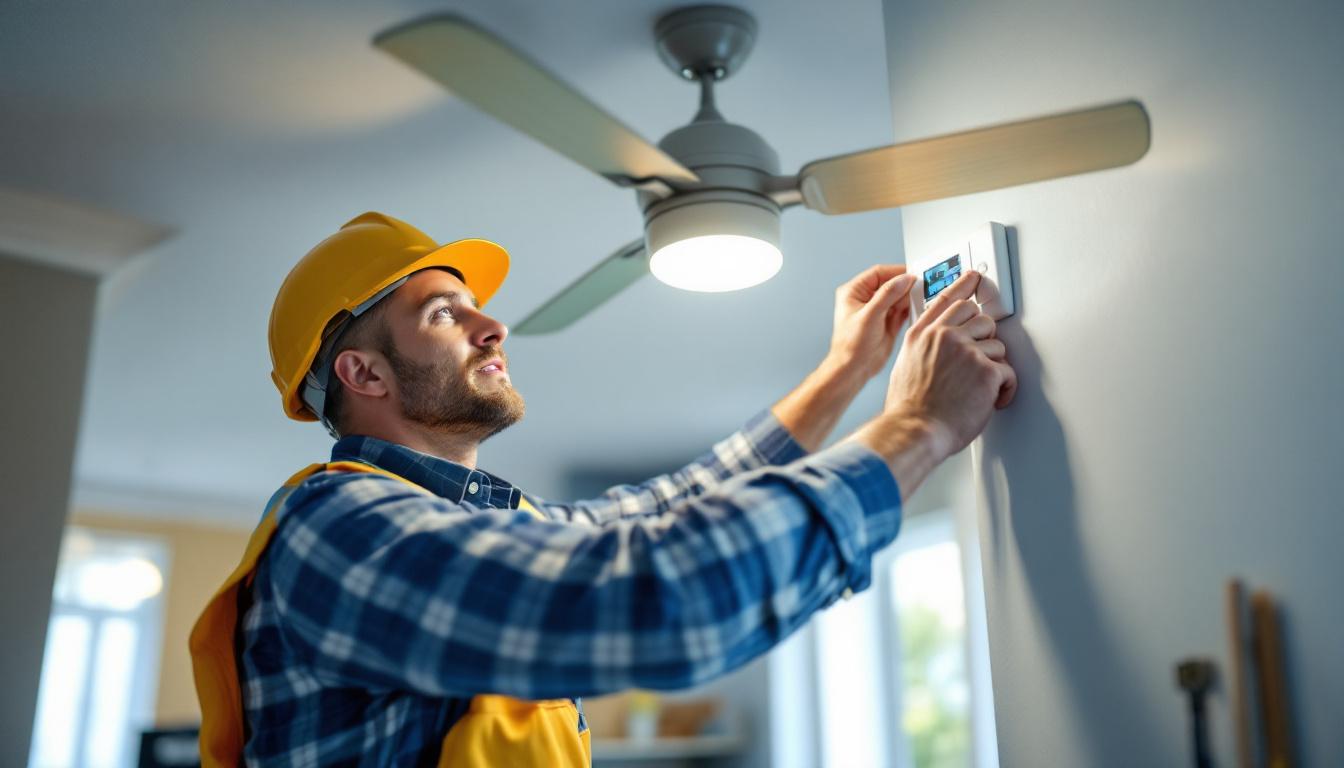
In the ever-evolving world of lighting solutions, motion sensor technology has emerged as a game-changer for both residential and commercial applications. For lighting contractors, understanding and implementing this technology can significantly enhance service offerings and improve profitability. By integrating motion sensors into lighting systems, contractors can provide clients with energy-efficient solutions that not only reduce costs but also enhance convenience and security. The ability to automatically turn lights on and off based on occupancy not only contributes to energy savings but also prolongs the lifespan of lighting fixtures, making it a win-win for both contractors and clients.
This article serves as a comprehensive guide for lighting contractors looking to boost their profits through the adoption of motion sensor switches. From understanding the technology to exploring installation techniques and marketing strategies, this guide will equip contractors with the knowledge needed to capitalize on this trend. Furthermore, as smart home technology continues to gain traction, integrating motion sensors with other smart devices can create a seamless and automated environment, appealing to tech-savvy consumers. This integration can include features such as smartphone control, remote monitoring, and even compatibility with home security systems, thereby expanding the potential market for contractors.
Moreover, the versatility of motion sensors allows them to be used in a variety of settings, from outdoor pathways and parking lots to indoor hallways and conference rooms. In commercial settings, occupancy sensors can help businesses comply with energy regulations while also creating a more inviting atmosphere for employees and customers. With the rise of sustainability initiatives, many organizations are looking for ways to reduce their carbon footprint, and motion sensor technology is an effective solution that aligns with these goals. By positioning themselves as experts in this field, contractors can not only attract more clients but also establish long-term relationships based on trust and reliability.
Motion sensors are devices that detect movement within a specified area and trigger a response, often in the form of activating lighting systems. They utilize various technologies, including passive infrared (PIR), ultrasonic, and dual-technology sensors, to identify motion. Each type has its own set of advantages and ideal applications, making it crucial for contractors to understand their differences.
PIR sensors are the most common type, designed to detect changes in infrared radiation caused by moving objects, such as people or animals. Ultrasonic sensors emit sound waves and measure their reflection to detect motion, making them effective in areas where PIR sensors may struggle, such as in spaces with obstacles. Dual-technology sensors combine both PIR and ultrasonic technologies to minimize false triggers and maximize reliability.
Integrating motion sensors into lighting systems offers numerous benefits that can enhance the value proposition for contractors. One of the most significant advantages is energy efficiency. By ensuring that lights are only activated when needed, motion sensors can lead to substantial energy savings for clients, which is an appealing selling point.
Additionally, motion sensors improve safety and security. They can illuminate pathways, driveways, and entry points automatically when someone approaches, deterring potential intruders and providing peace of mind for homeowners and business owners alike. This functionality can be particularly attractive in residential neighborhoods and commercial properties with high foot traffic.
The effectiveness of motion sensors largely depends on their placement. Contractors should assess the area where the sensors will be installed, considering factors such as the layout, potential obstructions, and the specific needs of the client. Common locations include hallways, entryways, garages, and outdoor areas.
When installing indoor sensors, it is essential to avoid placing them near heat sources, such as radiators or air conditioning vents, as these can cause false triggers. Outdoor sensors should be positioned to cover as much area as possible while minimizing exposure to direct sunlight or heavy rain, which can also affect performance.
Motion sensors can be wired or wireless, and the choice between the two will depend on the specific project requirements. Wired sensors typically offer more reliability and are less susceptible to interference, while wireless options provide flexibility and ease of installation. Contractors should be well-versed in both methods to cater to diverse client needs.
For wired installations, it is crucial to follow local electrical codes and guidelines to ensure safety and compliance. This may involve running conduit, securing connections, and ensuring proper grounding. Wireless installations, on the other hand, require attention to battery life and signal strength to avoid connectivity issues.
After installation, thorough testing and calibration of motion sensors are essential to ensure optimal performance. This process involves adjusting sensitivity settings, detection range, and time delays to suit the specific environment and client preferences. Proper calibration minimizes the risk of false triggers and maximizes energy savings.
Contractors should also educate clients on how to use the sensors effectively, including how to adjust settings if necessary. This not only enhances customer satisfaction but also builds trust and credibility for the contractor.
To successfully market motion sensor solutions, contractors need to identify their target markets. Residential clients often seek energy-efficient solutions and enhanced security for their homes, while commercial clients may prioritize cost savings and improved safety for employees and customers.
Understanding the specific needs and pain points of each market segment allows contractors to tailor their marketing strategies effectively. For instance, highlighting energy savings and security benefits may resonate more with residential clients, while emphasizing operational efficiency and cost reduction could appeal to commercial clients.
Effective marketing materials are crucial for attracting potential clients. Contractors should develop brochures, flyers, and online content that clearly outline the benefits of motion sensor technology. Including case studies, testimonials, and before-and-after scenarios can help illustrate the positive impact of these solutions.
Digital marketing strategies, such as social media campaigns and search engine optimization (SEO), can also enhance visibility and reach. By sharing informative content related to motion sensors, contractors can position themselves as experts in the field, building trust with potential clients.
Building relationships with other professionals in the industry can lead to valuable referrals and partnerships. Contractors should consider networking with builders, architects, and interior designers who may recommend motion sensor solutions to their clients. Attending industry trade shows and local business events can also provide opportunities to connect with potential partners.
Collaborating with energy efficiency programs or local governments can further enhance credibility and open doors to new projects. Many municipalities offer incentives for energy-efficient upgrades, which can be a compelling selling point for clients considering motion sensor installations.
One of the primary concerns clients may have regarding motion sensor installations is cost. While the initial investment may be higher than traditional lighting solutions, contractors should emphasize the long-term savings associated with energy efficiency and reduced maintenance costs. Providing a clear return on investment (ROI) analysis can help clients understand the financial benefits.
Additionally, many manufacturers offer financing options or rebates for energy-efficient products, making it easier for clients to justify the expense. Contractors should stay informed about available incentives to guide clients through the financial aspects of their projects.
Privacy concerns may arise, particularly with outdoor motion sensors. Clients may worry about being monitored or recorded without their consent. Contractors should reassure clients that motion sensors do not record video or audio; they simply detect movement to activate lighting.
Educating clients about the technology and its limitations can help alleviate these concerns. Demonstrating how motion sensors can enhance security without compromising privacy will build trust and encourage clients to embrace this innovative solution.
The future of motion sensor technology is closely tied to the rise of smart home systems. As more homeowners invest in smart technology, the demand for motion sensors that can integrate seamlessly with these systems is expected to grow. Contractors should stay informed about advancements in smart technology and how motion sensors can enhance these systems.
Integrating motion sensors with smart home platforms allows for greater control and customization. For instance, homeowners can set specific lighting schedules, receive alerts when motion is detected, and even control lighting remotely through mobile apps. This level of convenience and control is increasingly appealing to tech-savvy clients.
As technology continues to evolve, motion sensors are becoming more sophisticated. New advancements, such as enhanced sensitivity, improved range, and the ability to differentiate between types of motion, are making these devices more effective than ever. Contractors should keep an eye on emerging technologies and be prepared to offer clients the latest solutions.
Additionally, the development of energy-harvesting sensors, which generate their own power from ambient energy, could further enhance the appeal of motion sensors by eliminating the need for batteries or wired connections. Staying ahead of these trends will position contractors as leaders in the industry.
Incorporating motion sensor technology into lighting solutions presents a unique opportunity for contractors to boost profits while providing enhanced value to clients. By understanding the technology, mastering installation techniques, and effectively marketing these solutions, contractors can set themselves apart in a competitive market.
As the demand for energy-efficient and convenient lighting solutions continues to grow, embracing motion sensor technology is not just a trend but a strategic move for lighting contractors. By staying informed about advancements in the field and addressing common client concerns, contractors can build lasting relationships and drive business growth.
Ultimately, the integration of motion sensors into lighting systems represents a forward-thinking approach that aligns with the needs of modern consumers. By taking the initiative to adopt this technology, lighting contractors can enhance their service offerings and secure a profitable future in the industry.
Ready to elevate your lighting projects with the latest motion sensor technology? Look no further than LumenWholesale for all your lighting needs. We provide contractors with high-quality, specification-grade lighting products at unbeatable wholesale prices. Say goodbye to local distributor markups and hello to our extensive selection that meets the highest industry standards. With LumenWholesale, you can ensure reliable, high-performance lighting for every project. Plus, enjoy the convenience of bulk buying with free shipping, ensuring you get premium lighting at the best price — without hidden fees or compromises. Take advantage of quality, affordability, and convenience all in one place. Wholesale Lighting at the Best Value is just a click away. Enhance your service offerings and secure a profitable future with LumenWholesale.

Discover the essential insights lighting contractors need to know about wafer lights.

Discover how Shop Fan 24 can revolutionize your business by enhancing your lighting projects.

Discover cost-saving strategies for ceiling fan controls tailored for lighting contractors.

Discover essential insights into the art of painting lighting fixtures with our comprehensive guide tailored for lighting contractors.